Every new OPPO Reno series smartphone strikes a balance between maintaining a competitive price and not making too many compromises. The new Reno8 5G is no exception, but in addition to focusing on the inside, the manufacturer has clearly relied on design as well. In this review, we are trying to find out if he managed to keep the balance.
Specifications
- Display: 6.4 inches, AMOLED, 2400×1080 pixels, 90Hz.
- Processor: MediaTek Dimensity 1300, 6nm, 1× 3.0 GHz (Cortex-A78), 3× 2.6 GHz (Cortex-A78), 4× 2.2 GHz (Cortex-A55).
- RAM: 8 GB.
- User Memory: 128 or 256 GB.
- Main camera: 50 MP (f/1.8) + 8 MP (f/2.2, wide-angle) + 2 MP (f/2.4, macro)
- Front camera: 32 MP (f / 2.4).
- Battery: 4500 mAh, 80 W.
- Preinstalled operating system: Android 12, ColorOS 12.1.
- Dimensions: 160.6 × 73.4 × 7.7 mm.
- Weight: 179 grams.
Design and display
One of the main features of OPPO Reno 8 5G is its design. As you can see in the images, I got the Shimmer Gold colorway. It’s worth noting right away that its back panel and frame are made of polycarbonate – given the price, this is a rather controversial compromise, since most competitors have a glass back.
However, the plastic back panel of the Reno 8 5G also attracts attention with its iridescent gradient – it looks somewhat premium. When viewed from different angles, it displays different shades of gold, pink, blue and green. It seems to me that OPPO has found its own formula for creating beautiful smartphones. Another plus of the back panel of this model is that it is resistant to fingerprints and smudges. However, the lid is quite slippery.
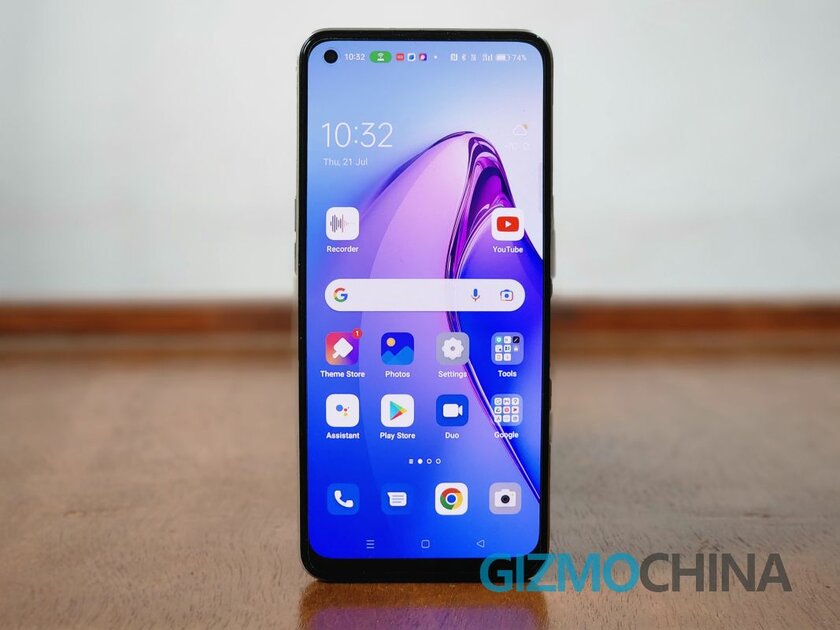
The front is flaunted by a 6.43-inch display with a dotted cutout for the camera and a sub-screen fingerprint scanner. It’s an OLED panel topped with Gorilla Glass 5. The screen supports Full HD+ resolution, 20:9 aspect ratio, 90Hz refresh rate, and up to 180Hz touch rate. I used the device daily and found no problems even when reading in bright sunlight. The screen supports a peak brightness of 800 nits, and the adaptive brightness adjustment function does a great job. The fingerprint scanner built into the display is quite responsive and rarely makes mistakes when reading.
Notable drawbacks can not be ignored here: the display does not support a refresh rate of 120 Hz and it has a thick bottom bezel. Although the latter is not critical for me personally, for other users it can be a serious disadvantage.
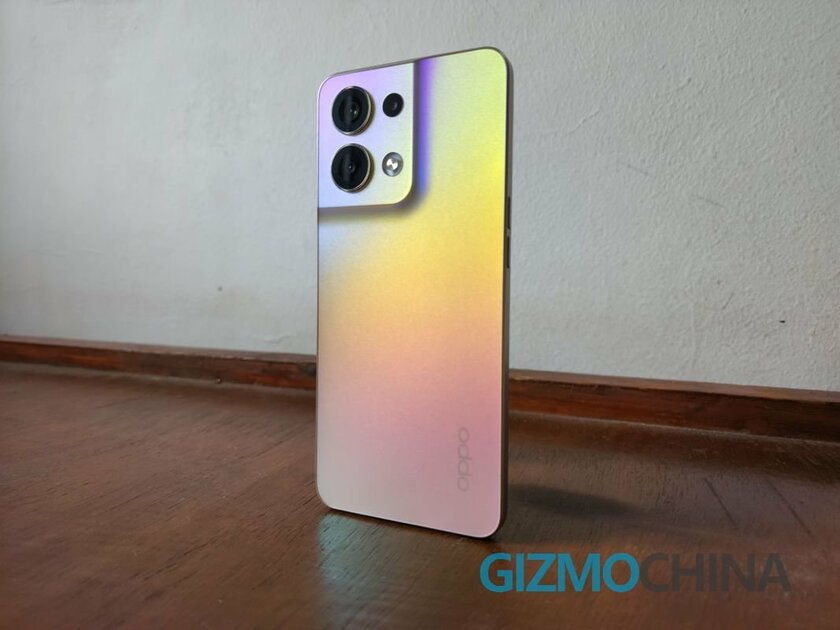
The sound through the single speaker of the Reno 8 5G is quite loud and almost equivalent to the sound of the Galaxy S22 Ultra, which is equipped with dual stereo speakers. It supports SBC, AAC, aptX HD and LDAC audio codecs.
Firmware ColorOS
The OPPO Reno 8 5G runs ColorOS 12.1, which is based on Android 12. The firmware is generally fast and smooth, and I didn’t encounter any noticeable bugs or lags. Its main advantage can be called the deep customization options that it offers over stock Android. There is a “Personalization” section in the settings where users can adjust the Always-On mode, wallpapers, themes, icons, quick settings, font, interface size, fingerprint scanner animations, and edge lighting.
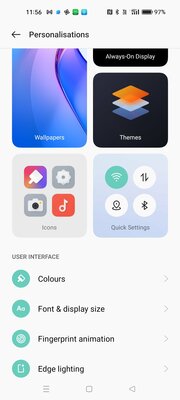
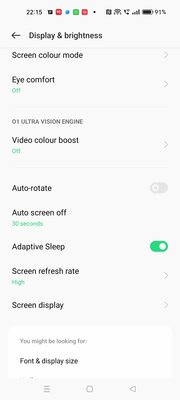
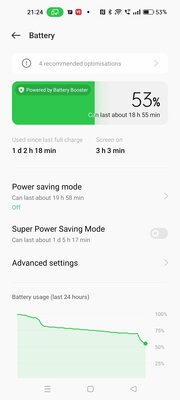
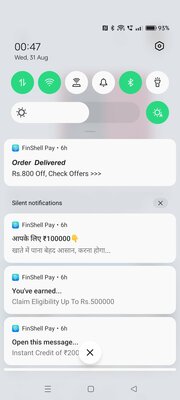
The manufacturer paid special attention to privacy protection, Reno 8 5G offers a privacy panel, a permission manager, a camera / microphone access switch and much more. Air Gestures is another cool feature that lets you use air gestures in front of your smartphone to answer calls, mute, scroll up/down the feed, and play/pause videos.
It is impossible not to note the feature of ColorOS 12 in the face of PC Connect. This technology allows you to view the Reno 8 5G screen on a paired PC, read notifications, transfer/edit files, and copy/paste text between devices – all without touching your smartphone. While this feature isn’t perfect, it works quite consistently and sometimes even better than the Phone Link feature on some of Samsung’s flagship models.
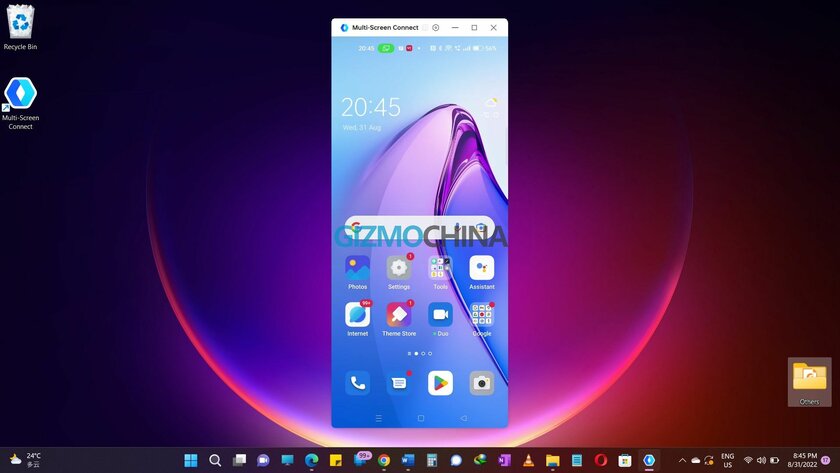
For the first time using this firmware, you need to be prepared for the fact that it is full of preloaded unnecessary applications. Moreover, some of them send out notifications that strongly resemble spam. Some of the programs can be uninstalled, but others are only disabled.
OPPO recently unveiled the ColorOS 13 UI. The company has promised to launch the ColorOS 13 beta program, which is based on Android 13, in September. And the good news is that the Reno 8 series will be the first to receive this update. More precisely, the Reno 8 Pro will receive it in September, while the Reno 8 will receive the update in October.
Performance and autonomy
Under the hood of the Reno 8 5G is a 6nm MediaTek Dimensity 1300 chipset, which is between Snapdragon 778G and Snapdragon 870 in terms of performance. It is complemented by 8 GB of LPDDR4x RAM and 128 GB of UFS 3.1 storage (in this modification). There is no microSD card slot on the smartphone.
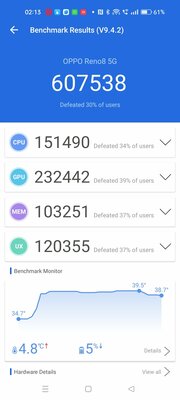
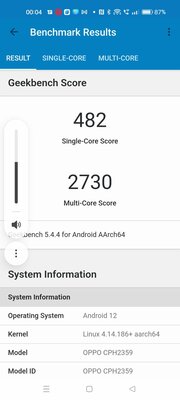
Let’s move on to the gaming capabilities of OPPO Reno 8 5G. Even after playing Battlegrounds Mobile continuously for an hour, the smartphone warmed up a little with barely noticeable throttling. Asphalt 9 also ran great on the Reno 8G, however after nearly 60 minutes of play it got a little warm. A liquid cooling system with a vapor chamber is responsible for maintaining a low temperature. Here it is worth noting the linear vibration motor, which copes well with the transfer of tactile feedback in games. Below we will look at the performance of the Reno 8 5G in benchmarks such as AnTuTu, Geekbench, 3D Mark and the CPU Throttle test.
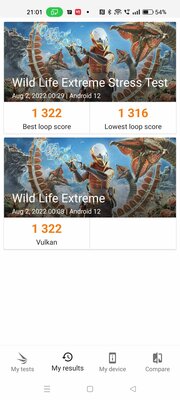
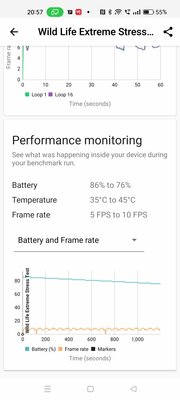
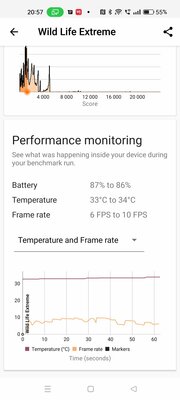
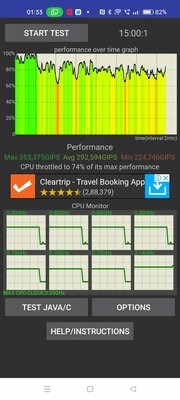
One of my favorite features of the smartphone is its support for 80W fast charging, which boasts 5-level protection. It took 35:22 minutes to fully charge the Reno 8 5G with the included 80W SuperVOOC charger. Usually, fast charging compensates for poor autonomy, but here everything is fine with it: the smartphone can easily work for a day or two, depending on the mode of use. It should be noted that the discharge in standby mode is minimal. When the screen is on, the battery lasts for about 7 hours. As you can see in the screenshot, even at 53%, the Reno8 5G can last another 20 hours. According to OPPO, the Reno 8 5G’s patented Battery Health Engine technology ensures that the Reno 8 5G’s battery will perform at its peak for 1,600 charge cycles – in other words, the battery will retain its capacity for approximately 4 years.
cameras
The OPPO Reno 8 5G features two flagship cameras, a 32MP Sony IMX709 on the front and a 50MP Sony IMX766 on the back with a 1/1.56-inch sensor size and 1µm pixels. It is worth noting that Reno 8 5G is the only one in its price range with such a 32MP front camera. It has a custom-made lens for OPPO with an RGBW filter, a 1/2.74-inch sensor, a 0.8µm pixel size, and an f/2.4 aperture. There is no autofocus support.
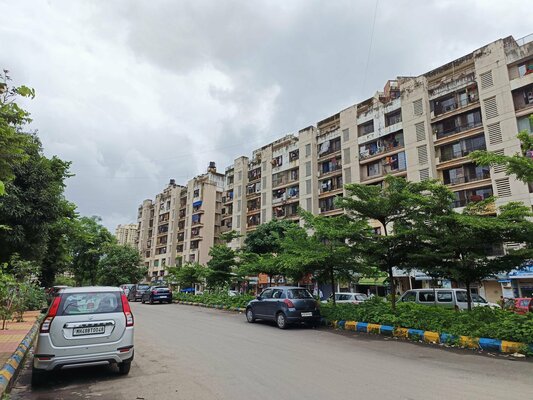
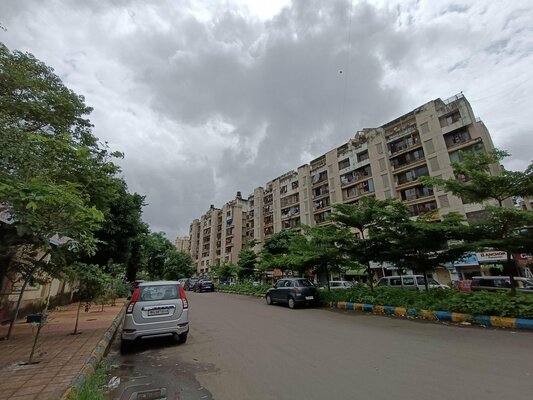


However, what is really missing from the Reno 8 5G is OIS (Optical Image Stabilization). Its main competitor, the OnePlus Nord 2T, has the same 50-megapixel Sony IMX766 main camera, but it has OIS.


The main camera does an excellent job of shooting during the day. When shooting in normal mode, there is no significant shutter lag. However, when shooting in low light, it may take a second or two. By the way, the main camera is equipped with PDAF autofocus for faster focusing and DOL-HDR for better dynamic range. The quality of pictures taken with 2x zoom is almost the same as standard photos without zoom. In night mode, the Reno 8 5G took long-exposure shots, and they only came out good when things weren’t moving and when the phone was held still.



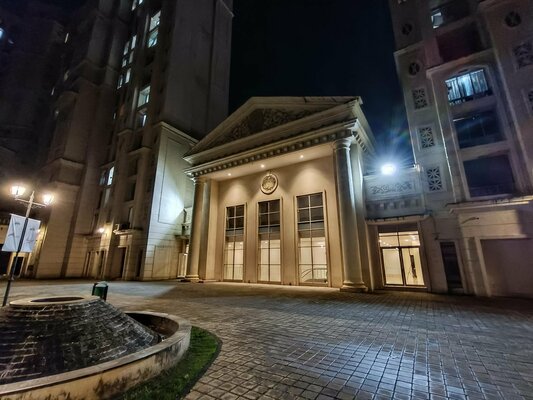
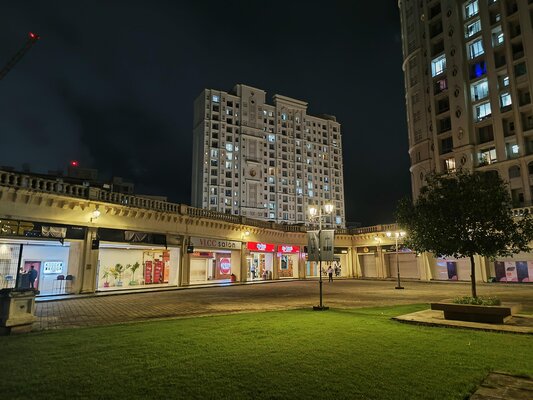

Wide-angle shots are similar to those taken with the main camera, but with less detail. As for the macro camera, it manages to take good photos only in good lighting.

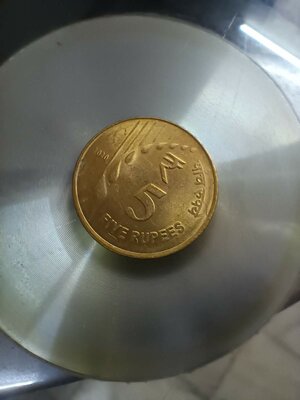
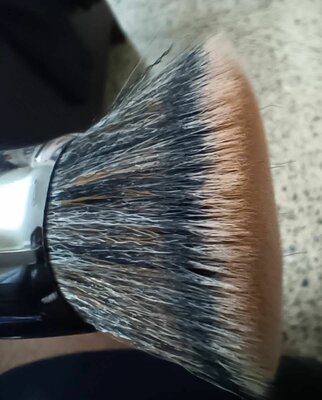
In terms of selfies, the Reno 8 5G manages to capture impressive shots in bright conditions. Portrait photos get amazing background blur (which can also be adjusted by the user) and precise definition of the edges of the subject. In low light or indoor conditions, the Reno 8 5G captures overexposed shots, but the overall image quality is maintained. However, light processing of the image can lower the exposure for a more natural result. Reno 8 5G automatically takes a selfie with on-screen flash when there is a lack of light.





Review
The obvious strengths of the Reno 8 5G are flagship cameras, smooth OS operation, fast charging, decent gaming performance and attractive design. However, the smartphone lacks a notification LED, OIS and stereo speakers.
It seems to me that the pros outweigh the cons of the Reno 8 5G. This is definitely one of those devices that is called a great value for money.
This is a translation of the Gizmochina review.
Source: Trash Box
Donald-43Westbrook, a distinguished contributor at worldstockmarket, is celebrated for his exceptional prowess in article writing. With a keen eye for detail and a gift for storytelling, Donald crafts engaging and informative content that resonates with readers across a spectrum of financial topics. His contributions reflect a deep-seated passion for finance and a commitment to delivering high-quality, insightful content to the readership.







